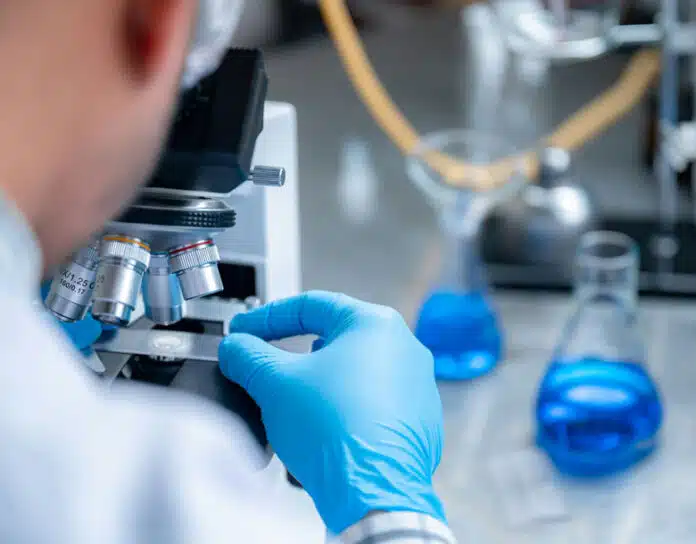The cure for diabetes is a life free from daily insulin injections. Based on that criterion, 10 out of 12 people (83%) in a new clinical trial were cured of their diabetes one year after receiving an advanced stem cell therapy.
This study used laboratory-grown pancreatic islet cells. They were infused into the liver, where they took up residence. Within a year, most participants no longer required insulin injections.
One of the most striking benefits was the rapid prevention of dangerously low blood sugar levels, called hypoglycemia. Before transplantation, all participants had at least two episodes of severe hypoglycemia within the previous year.
After transplantation, these episodes disappeared for all participants.
These are impressive results, but what are stem cell therapies? How does the treatment work? How do they compare to other treatments? And what are the possible side-effects?
What are stem cell therapies?
Stem cells are cells that can be turned into almost any other cell type. The major benefit is that scientists in the lab can create the correct cells, the ones needed to treat a disease, and in the desired amount.
In the case of type 1 diabetes, the required cells are pancreatic islets. Most of the cells in these islets make insulin.
How does the treatment work?
The laboratory-grown cells are infused into the body. A common place is in a liver vein, where the cells attach. The advantage here is that insulin delivered towards the liver works much better than, say, just under the skin.
This is because switching off excessive liver glucose production is the primary action of insulin to correct blood sugar levels.
In the current study, the function of the transplanted cells, a treatment called XV-880, improved within the first three months. Blood glucose levels were better controlled. No severe hypoglycaemia was found and a marker of insulin production improved.
Throughout the first year, participants were able to reduce the amount of insulin they took, until most were free from insulin injections.
What are the side-effects?
The biggest downside of this new treatment is that all participants will need to take immunosuppressant drugs for the rest of their lives. This will reduce the immune system’s ability to recognize the transplanted cells and remove them.
This increases the risk of infections and certain types of cancer. That’s because the immune system plays an important role in removing potentially cancerous cells.
In this new study, two participants died. On closer inspection, these were unrelated to the treatment itself. Most participants had upset tummies, with diarrhoea as the most common side-effect, in 11 of 14 people. More than half also had headaches and nausea.
Is it better than other treatments?
For many years, people struggling with severe hypoglycemia have been able to receive new pancreatic islets from deceased donors. For a minority, this also leads to freedom from insulin injections over the longer term.
Typically, two or three donor pancreases need to be pooled together to give to one recipient. People may also need a second infusion within a relatively short time frame. Islet transplants are typically limited by the amount of donor cells available, which is not enough.
This new approach gives a standardized dose of cells, of known quality. The timing of the procedure is also not tied to the deaths of donors.
This new study is also not the first. In 2024, a 25-year-old woman with type 1 diabetes received a stem cell-derived islet transplant, which also led to freedom from insulin injections.
A 59-year-old man with poorly controlled type 2 diabetes was also cured with another type of stem cell transplant.
Both of these treatments will require lifelong immunosuppression. This is undesirable for many people and may limit uptake.
This is driving efforts to create treatment versions that do not require immunosuppression. There are efforts to enclose the transplanted cells inside devices that let insulin out but prevent the immune cells from getting in. There are also genetic editing techniques being used to cloak cells from the immune system.
However, these approaches are further behind in clinical development.
When might this be more widely available?
This is difficult to estimate. Larger trials with XV-880 are planned. The same company planned to test an immunosuppression-free version of their cell therapy, called XV-264. However, this failed to work well enough in a small pilot study and will no longer progress through trials.
There is also the issue of cost. It is not yet clear how much a treatment like this will cost. This will affect who can access advanced cell therapies. We also don’t yet know if and when the transplanted cells may start to fail.
In this trial, the company is monitoring recipients for 10 years in total. An initial five-year follow-up then a five-year extension study.
This gives an idea of how long we might need to wait. Despite this, the recent developments give reason for cautious optimism. It may be possible in the not-so-distant future to have a life without daily insulin injections.
This article was first published on The Conversation and was provided by Reuters.







